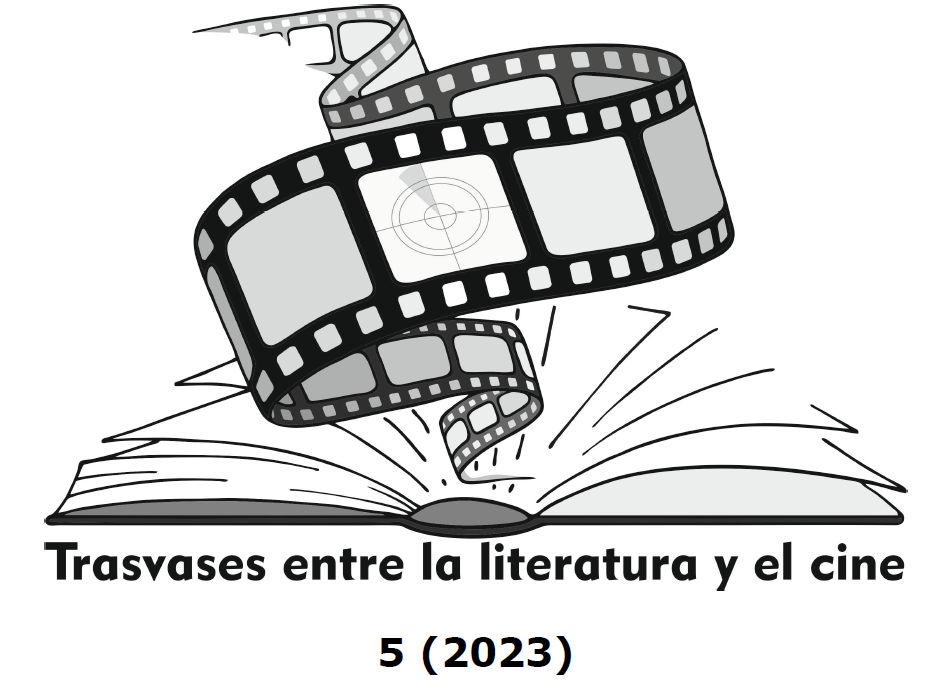Adapting Diana de Belflor: The Dog in the Manger’s Soviet Adventures
DOI:
https://doi.org/10.24310/tlc.5.2023.16597Keywords:
Lope de Vega, reception, adaptation, cinema, gender roles, URSSAbstract
Before Pilar Miro’s famous filmic adaptation of The Dog in Manger, Lope de Vega’s masterpiece had been successfully brought to the small screen in Soviet Russia. The Leningrad director Yan Frid’s 1977 musical comedy Sobaka na Sene (The Dog on the Hay), while almost unknow in the West, is considered a classic of Soviet cinema. This article explores the reasons behind the extraordinary popularity of this television film in relation to the Russian Lopean performance canon, as well as to the specific socio-cultural conditions of the Stagnation era. I argue that, by prioritizing the issue of gender relations over the conflict of honor, Sobaka na sene managed to inscribe new cultural meanings to the story of the Countess of Belflor and her secretary and, therefore, to bring Lope’s play closer to the Soviet viewers of the late 1970s.
Downloads
Metrics
Publication Facts
Reviewer profiles N/A
Author statements
Indexed in
-
—
- Academic society
- N/A
- Publisher
- Universidad de Málaga
References
ALBRECHT-CRANE, Christa y Dennis Cutchins (2010), «Introduction: New Beginnings for Adaptation Studies», en C. Albrecht-Crane y D. Cutchins (eds.), Adaptation Studies: New Approaches, Fairleigh Dickinson University, págs. 11–22.
ASHWIN, Sarah (2000), «Introduction: Gender, State, and Society in Soviet and Post-Soviet Russia», en S. Ashwin (ed.), Gender, State, and Society in Soviet and Post-Soviet Russia . Londres y Nueva York, Routledge, págs. 1–29.
ATTWOOD, Lynne (1990), The New Soviet Man and Woman: Sex-Role Socialization in the USSR . Indiana University.
BAYLISS, Robert (2015), «Thinking Globally, Acting Locally, and Performing Nationalism: Local, National, and Global Remakes of the Comedia», en H. Erdman y S. Paun de García (eds.), Remaking the Comedia.Spanish Classical Theater in Adaptation, Woodbridge, Tamesis, págs. 65–74.
CARREÑO, Antonio (1993), «Lo que se calla Diana: El perro del hortelano de Lope de Vega», en Y. Campbell (ed.),El escritor y la escena: Actas del I Congreso de la Asociación Internacional de Teatro Español y Novohispano de los Siglos de Oro (18–21 de marzo de 1992, Ciudad Juárez), Universidad Autónoma de Ciudad Juárez, págs. 115–128.
FRIEDMAN, Edward H. (2000), «Sign Language: The Semiotics of Love in Lope’s El perro del hortelano», Hispanic Review, 68/1, págs. 1–20.
GALIN, A. (1972), «Krasnym devitsam urok» [[“Una lección para las bellas muchachas], Moskovski komsomolets, 11 de junio, pág. 7.
GORBUNOV, Arnold (1975), Skvoz dal vekov: iz sokrovischnitsy zarubezhnoi poezii [A través de los siglos. Los tesoros de la poesía extranjera], Moscú, Kniga.
GOSCILO, Helena y Andrea Lanoux (2006), «Introduction: Lost in the Myths», en H. Goscilo y A. Lanoux (eds.), Gender and National Identity in Twentieth-Century Russian Culture , Northern Illinois University, págs. 3–29.
HUTCHEON, Linda con Siobhan O’Flynn (2013), A Theory of Adaptation , 2a ed., Londres y Nueva York, Routledge.
IVANOV, V. (1971), «Durochka» [La dama boba], Teatr , 6, págs. 42–44.
JONES, Roy O. (1964), « El perro del hortelano y la visión de Lope de Vega» Filología, 10, págs. 135–142.
KAMINSKAYA, Natalia (2006), «Venets tvorenia, divnaya Diana» [Corona de creación, divina Diana], Kultura, 13 de abril, s. pág. [En línea: www.smotr.ru/2005/2005vahsobaka.htm. Fecha de consulta 6/04/2023].
KAPRALOV, G. (1978), «Kreslo v pervom riadu» [Un asiento en la primera fila], Pravda, 4 de mayo, pág. 6.
KASPE, Irina (2018), V soyuze s utopiyey: smyslovye rubezhi pozdnesovetskoy kultury [En unión con la utopía: fronteras semánticas de la cultura de finales de la era soviética], Moscú, Novoye Literaturnoye Obozreniye.
KIBLITSKAYA, Marina (2000), «Russia’s Female Breadwinners: The Changing Subjective Experience», en S. Ashwin (ed.), Gender, State, and Society in Soviet and Post-Soviet Russia . Londres y Nueva York, Routledge, págs. 55–70.
KICHIN, V. (1978), «Sobaka na sene, Nos i druguiye: zametki o novogodnikh teleperedachakh» [El perro del hortelano, La nariz y otros: apuntes sobre los programas de televisión de Año Nuevo]. Trud, 8 de enero, s. pág.
KOZAKOV, Mikhail (1978), «V nachale bylo slovo» [En el principio era el Verbo], Literaturnoye obozreniye, 10, págs. 99–104.
KUKHTERIN, Sergei (2000), «Father and Patriarchs in Communist and Post-Communist Russia», en S. Ashwin (ed.), Gender, State, and Society in Soviet and Post-Soviet Russia . Londres y Nueva York, Routledge, págs. 71–89.
KURZHIYAMSKAYA, Anzhelika (1978), «Neznakomiye znakomtsy: akterskiye raboty na teleekrane» [Los conocidos desconocidos. El trabajo de los actores en la pantalla chica] Sovetskaya kultura, 20 de enero, pág. 4.
LAPIDUS, Gail Warshofsky (1978), Women in Soviet Society: Equality, Development, and Social Change , University of California.
LARSON, Catherine (2016), «Adapting the Spanish Classics for 21st-Century Performance in English: Models for Analysis», en G. E. Campbell y A. R. Williamsen (eds.), Prismatic Reflections on Spanish Golden Age Theater: Essays in Honor of Matthew D. Stroud , Nueva York, Peter Lang, págs. 275–285.
LEBINA, Natalia (2014), Muzhchina i zhenschina: telo, moda, kultura. SSSR—ottepel [El hombre y la mujer: cuerpo, moda, cultura. La URSS—el deshielo]. Moscú, Novoye Literaturnoye Obozreniye.
LEITCH, Thomas (2005), «Everything You Always Wanted to Know about Adaptation: Especially If You’re Looking Forwards Rather than Back», Literature Film Quarterly , 33/3, págs. 233–245.
LENDOVA, V. (1972), «Nerastorzhimiye sviazi» [Unos vínculos indisolubles], Teatr, 4, págs. 79–83.
MAROTO CAMINO, Mercedes (2003), «“Esta sangre quiero”: Secrets and Discovery in Lope’s El perro del hortelano», Hispanic Review , 71/1, págs. 15–30.
ANANIEV, Mikhail, dir., Ne sovetskaya istoriya (Sobaka na sene) [Una historia no soviética (El perro del hortelano)], 2008. [En línea: youtube.com/watch?v=4EBqedCYxx8. Fecha de consulta 6/04/2023].
OTIUGOVA, T. y R. Khidekel (1978), «Vstrecha s Truffaldino» [El encuentro con Truffaldino], Smena, 28 de febrero, pág. 4.
PRING-MILL, Robert D. F. (1961), «Introduction», en R. D. F. Pring-Mill (ed.), Five Plays, by Lope de Vega, trad. de Jill Booty, Nueva York, Hill & Wang, págs. vii–xli.
PRONKEVICH, Oleksandr (2017), «El protagonismo de la mujer en dos lecturas cinematográficas de la comedia lopesca El perro del hortelano», en U. Aszyk et al. (eds.),El texto dramático y las artes visuales: el teatro español del Siglo de Oro y sus herederos en los siglos XX y XXI, Madrid, IDEA, págs. 209–220.
ROTHBERG, Irving P. (1977), «The Nature of the Solution in El perro del hortelano », Bulletin of the Comediantes, 29/2, págs. 86–96.
RYJIK, Veronika. (2019), “La bella España”: el teatro de Lope de Vega en la Rusia soviética y post-soviética , Madrid/Frankfurt, Iberoamericana/Vervuert.
— (2018), «Lope de Vega aligerado: el uso de la música en la teleadaptación soviética de El perro del hortelano», Anuario Lope de Vega , 24, págs. 94–118.
— (2015), «Lope de Vega and Lenfilm: The Dog in the Manger’s Cross-Cultural Journey», en H. Erdman y S. Paun de García (eds.), Remaking the Comedia: Spanish Classical Theater in Adaptation , Woodbridge, Tamesis, págs. 219–228.
SERGUEYEV, Yevgueni (1978a), «Garmoniya nesovmestimostei» [La armonía de las incompatibilidades], Televideniye i radioveschaniye, 4, págs. 39–40.
— (1978b), «Iz filma pesni ne vykinesh: Zametki o novogodnikh telepremierakh» [No se puede quitar una canción de un film: Apuntes sobre los estrenos navideños], Literaturnaya Rossiya, 20 de enero, pág. 17.
SILIUNAS, Vidas (1995), «El teatro del Siglo de Oro español: interpretación escénica y crítica en Rusia», en la Embajada de España en Moscú (ed.), Actas de la I Conferencia de Hispanistas de Rusia, Moscú, Universidad Lingüística Estatal, 9–11 febrero 1994 , Moscú, Ministerio de Asuntos Exteriores, págs. 9–11.
STAM, Robert (2005), «Introduction: The Theory and Practice of Adaptation», en R. Stam y A. Raengo (eds.), Literature and Film: A Guide to the Theory and Practice of Film Adaptation , Malden/Oxford/Carlton, Blackwell, págs. 1–52.
TSIMBAL, Serguei (1969), Razniye teatralniye vremena [Las diferentes épocas del teatro], Leningrado, Iskusstvo.
TUROVSKAYA, Maya (1953), «Krasivaya Ispaniya» [La bella España]. Sovetskaya kultura , 3 de septiembre, pág. 3.
UZIN, Vladimir (1955), «Veliki ispanski dramaturg» [El gran dramaturgo español], Sovetskaya kultura, 15 de octubre, pág. 4.
VEGA CARPIO, Lope de (2001). El perro del hortelano, ed. de Antonio Carreño, 14a ed., Madrid, Espasa Calpe.
VIPPER, Yury (1954), «Tvorchestvo Lope de Vega i ispanskaya dramaturguiya XVII veka» [La obra de Lope de Vega y la dramaturgia española del siglo XVII], en Y. Vipper y R. Samarin, Kurs lektsi po istorii zarubezhnykh literatur XVII veka [Ciclo de conferencias sobre la historia de la literatura extranjera del siglo XVII], ed. de S. Ignatov, La universidad estatal de Moscú, págs. 661–703.
VLADIMIROVA, Z. (1968), «Leguenda i teatr segodnia» [La leyenda y el teatro hoy], Teatr, 2, págs. 66–72.
VOLODIN, Maksim, dir., Tainy kino (Sobaka na sene) [Los misterioso del cine (El perro del hortelano)], 2016. [En línea: youtube.com/watch?v=BbpD21GgzWU. Fecha de consulta 6/04/2023].
YUFEROVA, G. (1978), «Novogodniaya skazka» [Un cuento navideño], Vecherniaya Ufa , 20 de enero, s. pág.
ZALESSKY, Victor (1940), «Laurensia», Moskovski bolshevik, 23 de mayo, s. pág.
ZORKAYA, N. (1978), «Dvoye sredi karnavala» [Dos en el medio del carnaval], Literaturnaya gazeta, 4 de enero, s. pág.
Downloads
Published
How to Cite
Issue
Section
Categories
License
Copyright (c) 2023 Veronika Ryjik

This work is licensed under a Creative Commons Attribution-NonCommercial-ShareAlike 4.0 International License.
All authors published in this journal accept the following copyright terms:
a. Authors retain their authors´ rights (copyright) and grant First Publication Rights to the journal, which whill be published under a the Creative Commons Attribution-NonCommercial-ShareAlike 4.0 International (CC BY-NC-SA 4.0) license. All about this license is available in the following link: <http://creativecommons.org/licenses/by-nc-sa/4.0>
b. Authors may separately establish additional agreements for the non-exclusive distribution of the version of the work published in the journal (e.g. including it in an institutional repository, or publishing it in a book) with an acknowledgement of its initial publication in this journal.
c. Authors are allowed and encouraged to disseminate their work electronically (e.g. in institutional repositories or on their own website) as this can lead to productive exchanges, as well as earlier and more extensive citation of published work.
The author is responsible for obtaining permission from the copyright holder when using copyrighted materials.
This electronic journal is published by University of Málaga (UmaEditorial), thus it is necessary to cite the origin of any partial or total reproduction.








22.png)










